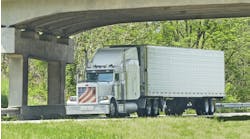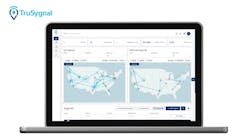Carriers operating at the ports of Long Beach and Los Angeles are facing considerable delays as skeleton teams of longshoreman scramble to organize mounting stacks of containers to let truckers do their job. It is the holiday season for haulers, and trucks are stuck waiting for their containers.
At peak times, up to 40 cargo ships are now anchored at the ports waiting for their turn— over three times the usual backlog. Shipping companies had underestimated the influx of cargo from Asia, as well as the strength of consumer demand and failed to hire enough dockworkers. Container volumes increased 20% year-over-year at the port of Long Beach alone, and including the Port of Los Angeles the number of containers increased 10% overall.
“It’s taking truckers a little longer than usual,” said Port of Long Beach spokesman Art Wong. “We’ve heard some truckers complain that they can’t do their job.”
Patty Senecal, vp— Transport Express Inc., told Fleet Owner that delays owner operators face at the docks are between three to seven hours. “There are huge queues, they don’t necessarily don’t go outside the terminals because it’s against the law so all the trucks idle inside,” she said, adding that drivers are stuck ‘inching’ up the line.
Because owner-operators traditionally get paid by the load, Transport Express has been negotiating with its customers to compensate for wasted idling time, which has been $55 per hour on average. Additionally, the company has been plagued with added penalties of demurrage (for staying inside the port too long) and late fees on equipment. “There are a lot of inefficiencies— we’re preparing our customers (for delays) until the end of February.”
Additionally, the tenuous working condition for drivers has made retention an even greater hurdle, Senecal said. With mounting concern over faster driver turnovers and demurrage and equipment fees, the carriers have been frustrated in enduring penalties it has no control over.
The ports had been backed up since June when an unexpectedly large number of railroad workers retired. A lot of the containers are loaded directly onto trains. “There have been delays on railroads and it’ll probably be until sometime next year before they could catch up on the volume,” Wong said.


